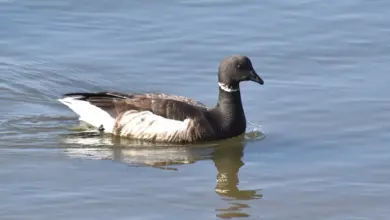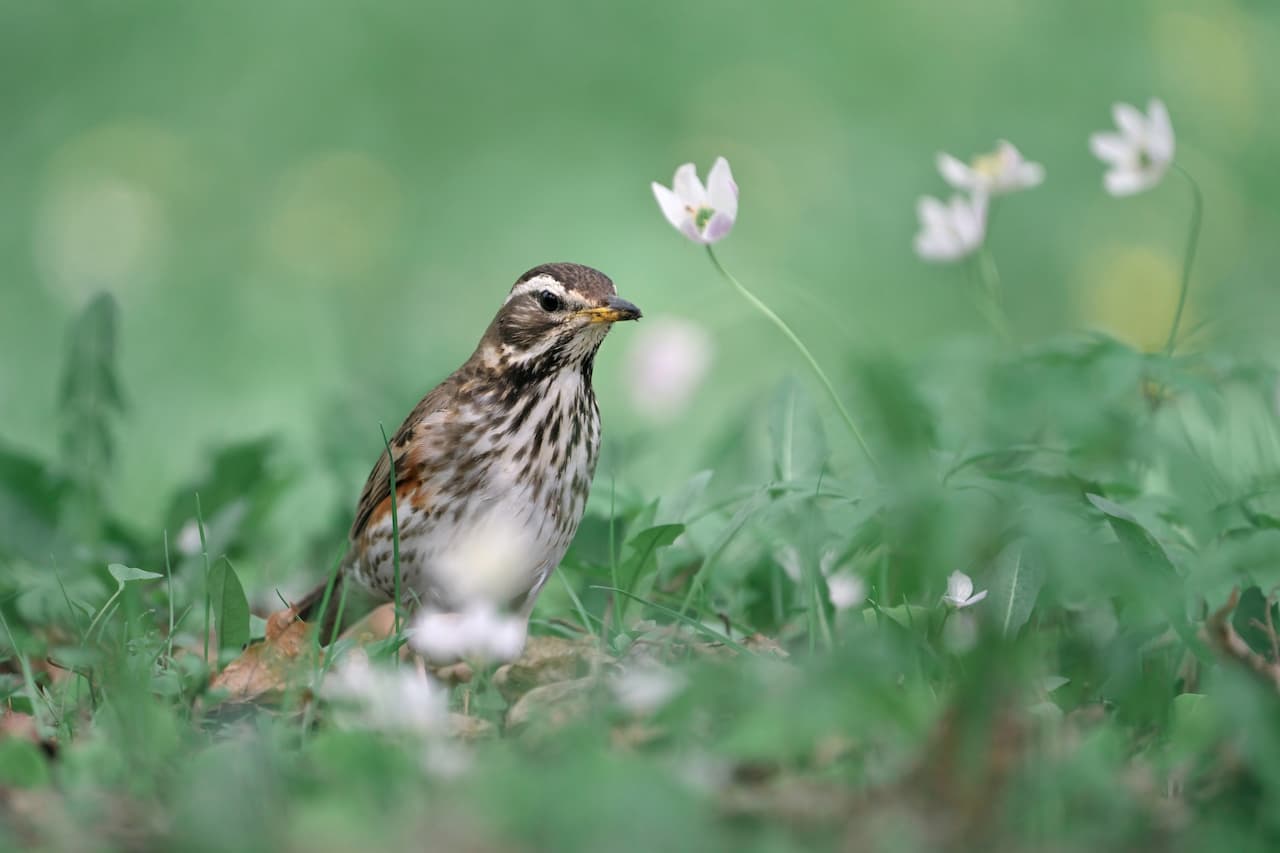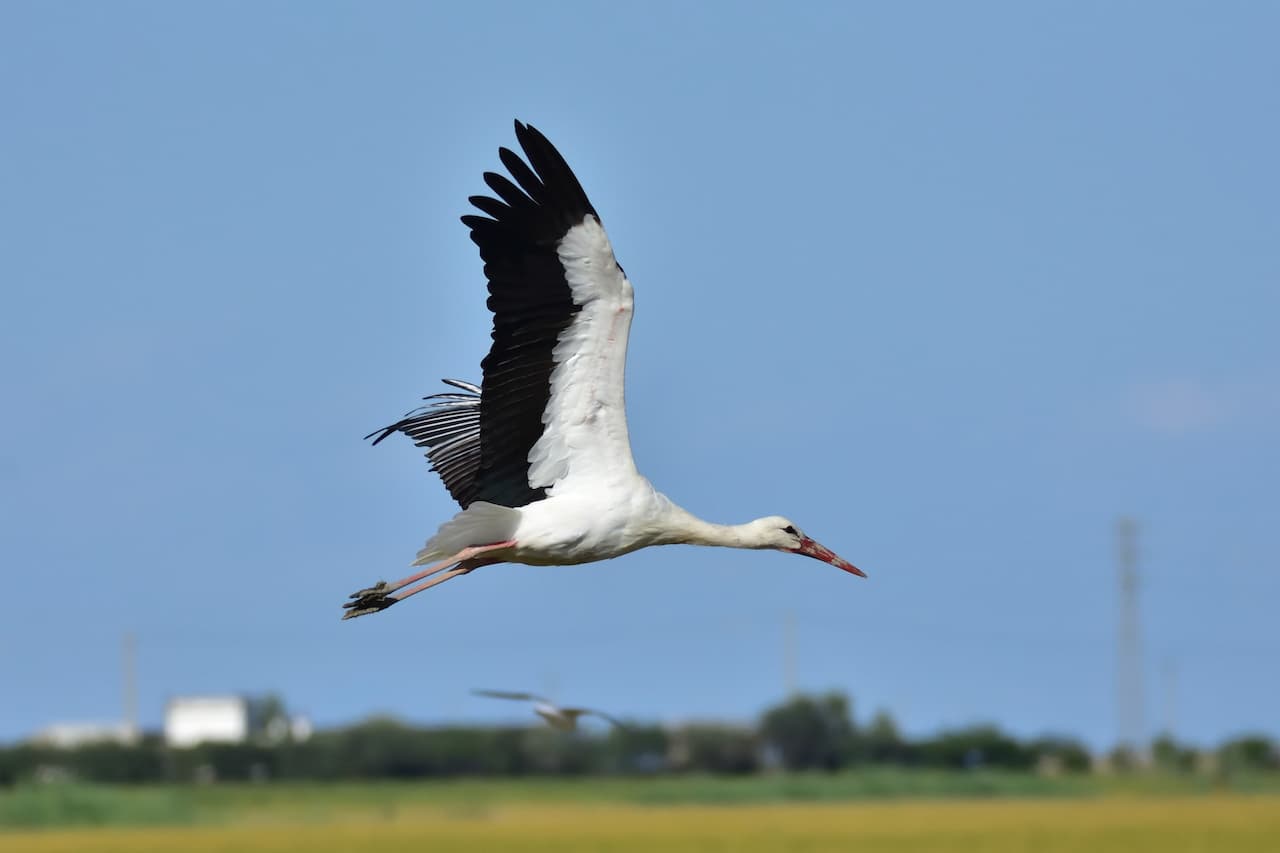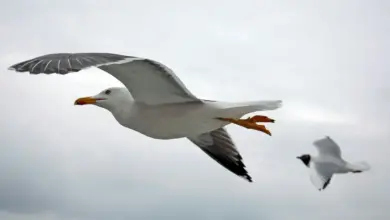The Crested Shelducks or Korean Crested Shelduck, Tadorna cristata, is a species of bird in the family Anatidae. It is critically endangered and believed by some to be extinct.
The male Crested Shelduck has a greenish-black crown, breast, primaries (longest wing feathers), and tail, while the rest of its face, chin, and throat are brownish black. The male’s belly, undertail coverts, and flanks are a dark grey with black striations. The upper wing coverts are white, while its speculum is an iridescent green.
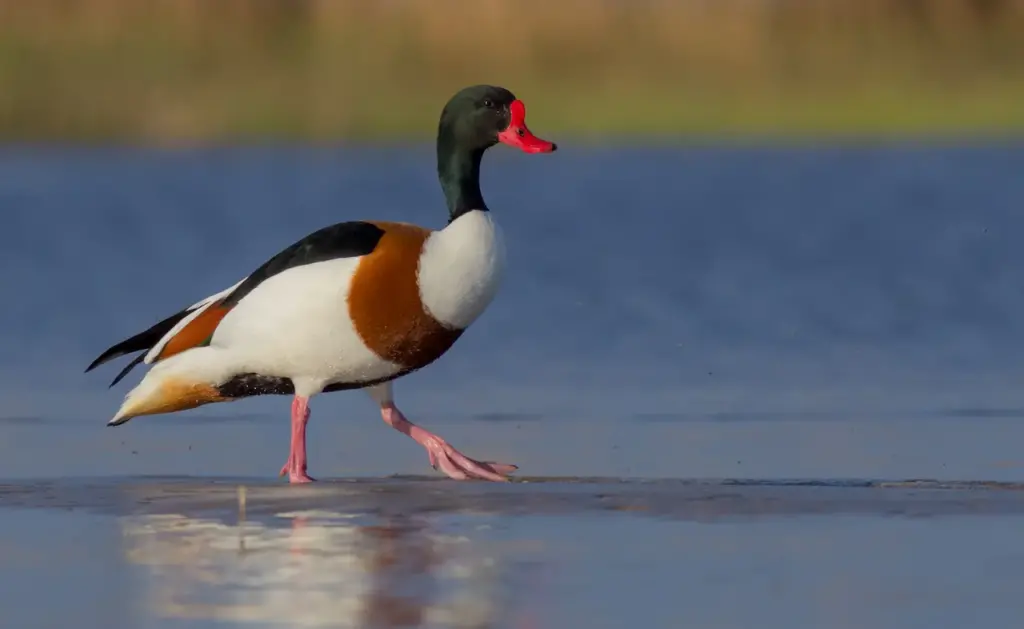
The female has a white eye ring, black crest, white face, chin, throat, neck, and uppers wing coverts and a dark brown body with white striations. Both sexes also have a distinctive green tuft of feathers protruding from the head.
Very little is known about this bird because of the limited number of observations of this species. It apparently bred in Korea and eastern Russia and was probably a relict species that had a wider distribution in prehistoric times. Some think that this species is extinct, although occasional sightings are reported, including a number of recent reports from the interior wetlands of China. Due to the persistent reports of the species’ survival, it is therefore listed as critically endangered. However, it has not been definitively sighted since 1964.
Description
The Crested Shelducks is sexually dimorphic, with the male having a greenish-black crown, breast, primaries (longest wing feathers), and tail, while the rest of its face, chin, and throat are brownish black. The male’s belly, undertail coverts, and flanks are a dark grey with black striations. The upper wing coverlets are white, while its speculum is an iridescent green.
The female has a white eye ring, black crest, white face, chin, throat, neck, and upper wing coverts. It also has a dark brown body with white striations.
Both sexes have a green tuft of feathers protruding from their head. The Crested Shelduck is about 63 to 71 centimetres (25 to 28 in) long and slightly larger than a Mallard. Its wingspan is about 31 to 32 centimetres (12 to 13 in). Its bill and legs are pinkish, though those of the female are paler than those of the male.
The plumage of the immature is unknown.
Distribution and habitat
The Crested Shelducks has been collected near Vladivostok in Russia and near Fusan and Kunsan in Korea. It has been proposed that the species breeds in far-eastern Russia, northern North Korea, and northeast China and winters in southern Japan, southwest Korea, and along the east China coast as far south as Shanghai. It is believed to have a relict range, or to have been more widespread in historic times.
This species is believed to live in a wide variety of wetland and deep-water habitats at varying elevations. While all collected individuals are from the coast, especially near river mouths, recently there have been a number of reports from interior wetlands in northeastern China. It has been speculated that this species may breed in mountainous areas either away from water or on volcanic lakes.
Ecology and behavior
Though not much is known about this shelduck due to a lack of studies of this elusive species, it is believed to be migratory, traveling from Siberia in the breeding season to Korea, southern Russia, and Japan for the winter.
The Crested Shelduck is believed to eat aquatic vegetation, agricultural crops, algae, invertebrates, mollusks, crustaceans, carrion, and garbage. It has been suggested that this shelduck may be a nocturnal feeder.
While its nest has not been described, similar shelducks nest in burrows and cavities and it has also been suggested that this species may nest in tree cavities. The bird is also suggested to lay less than ten eggs which the female alone incubates. It is believed to breed from May to July. The shelduck has been observed in flocks of two to eight birds.
Conservation
The Crested Shelducks was never numerous in modern times, though it is thought to have been more widespread historically. The species is known from only a handful of sightings and some declared it extinct in 1916 after a female was shot at Busan, South Korea.
In 1943, a sighting of this was reported near Chushinhokudo, building hopes that the species persisted. A group of three birds was also sighted in 1964 in the Rimsky-Korsakov Archipelago near Vladivostok with a small flock of Harlequin Ducks. In 1971 it was reported from North Korea’s northeast coast and in 1985 two were reported from eastern Russia.
However, there are many severe doubts about the accuracy of the 1971 record. A recent survey of Chinese hunters resulted in a number of unconfirmed reports from northeastern China. There are also unconfirmed reports of about twenty Crested Shelducks in the Dashanbao region of Yunnan, though many believe this flock to be a misidentified flock of Ruddy Shelducks. It is believed that, if the species survives, there likely are fewer than 50 individuals.
This species is threatened with extinction due to habitat loss, hunting, and overcollecting.
Recently, a Chinese forest worker claimed that he unknowingly ate two in 1984.
In an attempt to gather reports of this species and raise awareness so that they are not eaten, 300,000 leaflets were distributed in Russia, Japan, China, South Korea, and North Korea in 1983, with the only resulting report being the 1971 North Korea record. 15,000 leaflets were distributed in northeastern China in 1985 and 1991.
While this garnered 82 reports of the species, follow-up surveys of the area failed to find the shelduck.
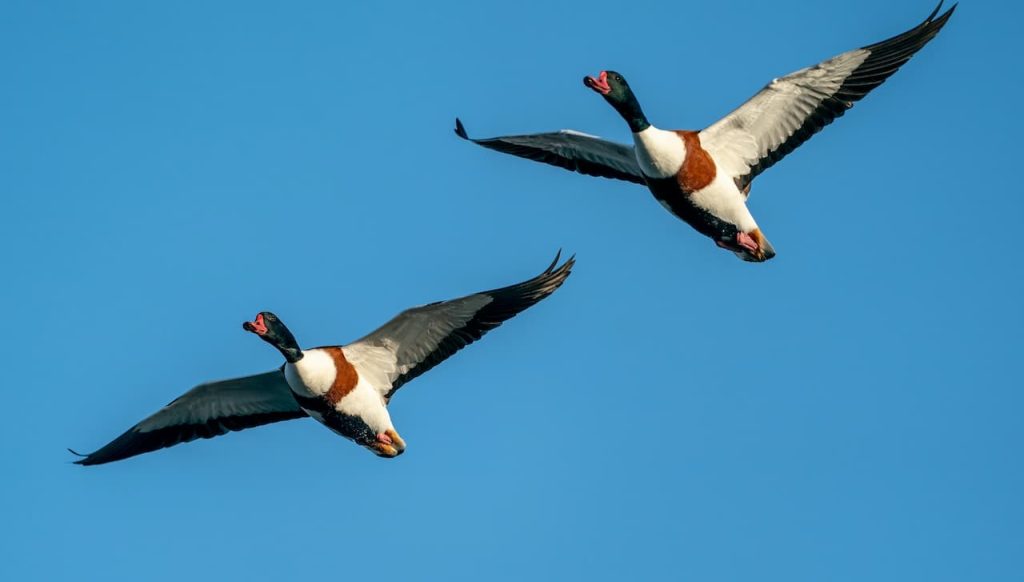
Relationship with humans
This duck was collected and exported to Japan between 1716 and 1736 for aviculture, where it was known as the Korean Mandarin Duck. It was captured for aviculture in Japan up to at least 1854 and was portrayed in the Kanbun-Kinpu, a Japanese avicultural work.
Old Chinese tapestries also portray a duck similar in appearance to the Crested Shelduck. Only one specimen of the male has ever been collected, which is now in the Kuroda collection at Tokyo with a female specimen.
Another female specimen, collected by Lieutenant F. Irmininger near Vladivostok, exists in the National Museum of Denmark in Copenhagen. In 1991, the Crested Shelducks appeared on a Mongolian postage stamp.
Taxonomy
The Crested Shelducks was initially reported in 1890 as a possible hybrid between the Ruddy Shelduck (Tadorna ferruginea) and Falcated Teal (Anas falcata) by English zoologist William Lutley Sclater.
However, it is generally believed that this species is not a hybrid and that the existence of such a crossbreed would be unlikely. Around 1913, a male and a female were collected in Korea, and presented to Japanese ornithologist Nagamichi Kuroda, who described this bird as a species in 1917.
It is a member of the duck family Anatidae and the genus Tadorna, which includes six other species of Old World shelducks.
The genus name Tadorna comes from the Celtic word tadorne and means “pied waterfowl”, essentially the same as the English “shelduck”. The specific name, cristata, comes from the Latin word for crested.
The species’ common name is derived from the tuft of green feathers from the shelduck’s head. This species is also known as the Korean Crested Shelducks, Korean Sheldrake, and Korean Mandarin.

Diet / Feeding:
Ducks feed on larvae and pupae usually found under rocks, aquatic animals, plant material, seeds, small fish, snails, and crabs.
Instead of “teeth,” ducks have serrations (saw-like edges) on their bills that allow them to filter food out of the water.
Captive birds are often fed commercially prepared duck food pellets – if there are insufficient natural resources available to sustain them. As they feed on insects, they are very useful in ridding gardens or lawns of harmful bugs.
Feeding Ducks …
We all enjoy ducks and many of us offer them food to encourage them to come over and stay around – and it works! Who doesn’t like an easy meal!
However, the foods that we traditionally feed them at local ponds are utterly unsuitable for them and are likely to cause health problems down the road. Also, there may be local laws against feeding this species of bird – so it’s best to check on that rather than facing consequences at a later stage.
- Foods that can be fed to Ducks, Geese and Swans to survive cold winters and remain healthy when food is scarce in their environment.
Please note that feeding ducks and geese makes them dependent on humans for food, which can result in starvation and possibly death when those feedings stop. If you decide to feed them, please limit the quantity to make sure that they maintain their natural ability to forage for food themselves – providing, of course, that natural food sources are available.


